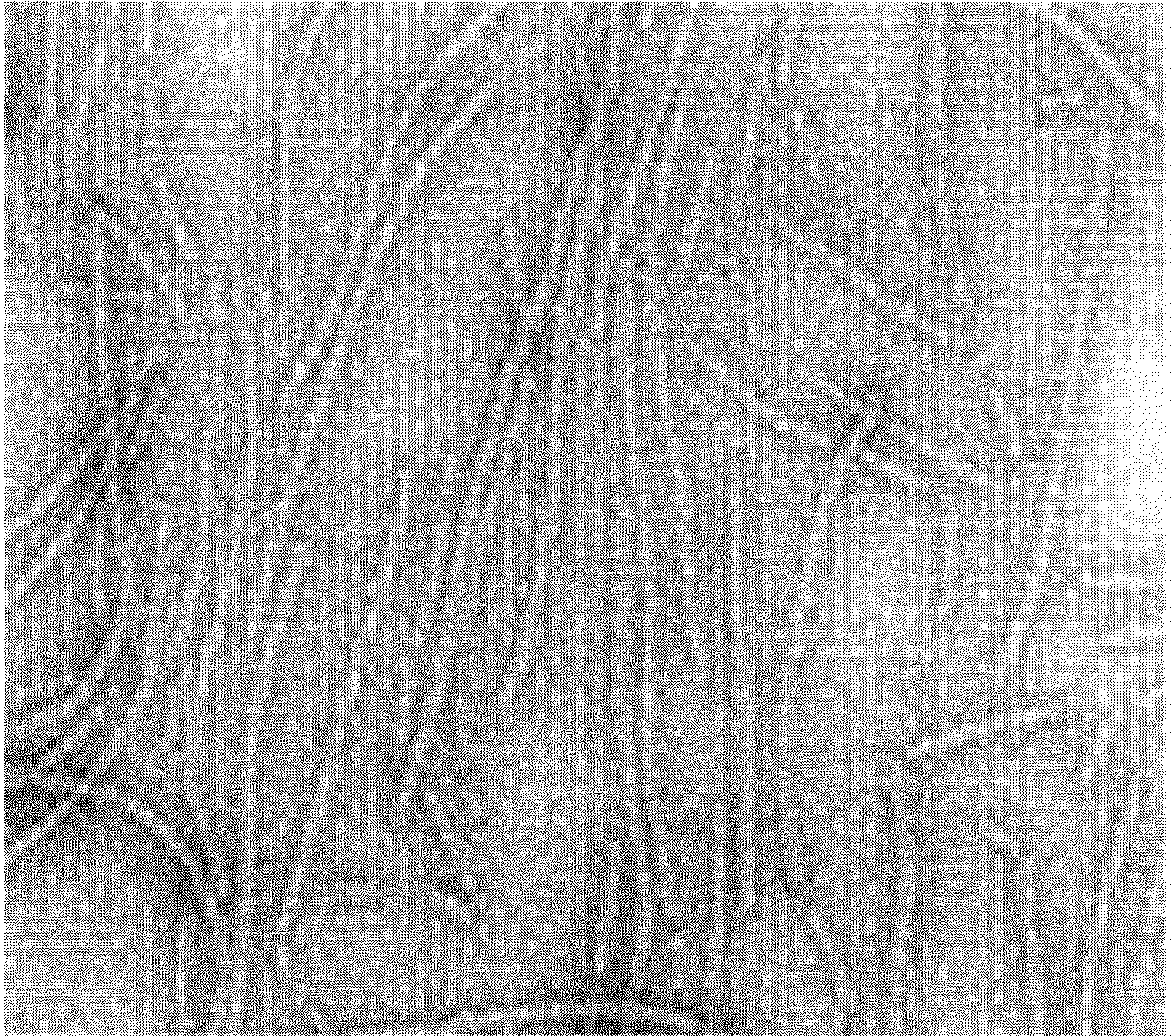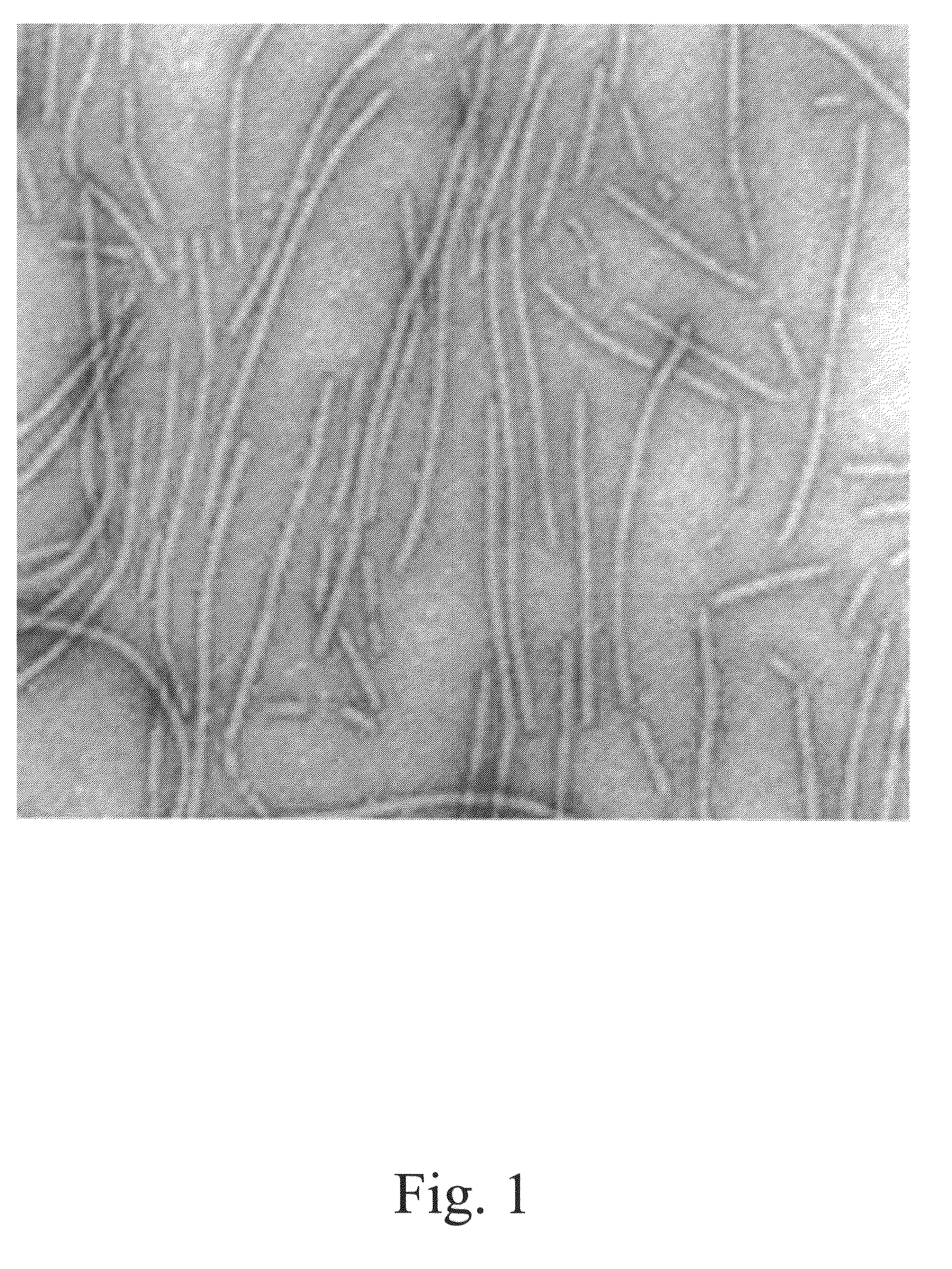Adjuvant viral particle
a technology of adjuvant and viral particles, applied in the field of adjuvant viral particles, can solve the problems of insufficient immunogenicity of peptides to serve as vaccines, inability to guarantee secondary or even primary response, and insufficient production of antibodies, etc., to achieve superior immune response, enhance immunogenicity or antigenicity, and enhance co-stimulator expression
- Summary
- Abstract
- Description
- Claims
- Application Information
AI Technical Summary
Benefits of technology
Problems solved by technology
Method used
Image
Examples
example i
Preparation of Immunogen-Carrier VLP
[0073]The avidity of the affinity peptides selected from the panning process described herein will be improved by multimerisation of the peptides. The multimerisation will be done at the surface of papaya mosaic virus (PapMV) that is a member of the potexvirus group. PapMV has a rod-like structure that is made by assembly of the CP subunits. One virus particle contains 1200 subunits. We will make a fusion of the selected peptide with the PapMV CP. The fusion will be made to expose the peptide to the surface of the PapMV particles after in vitro assembly from a PapMV CP expressed and purified from an E. coli expression system. The assembly of the viral CP then ensured multimerisation of the peptide and has considerably improved avidity.
[0074]Coat protein (CP) gene was cloned and developed an in vitro assembly system using the coat protein (CP) of papaya mosaic virus (PapMV) (FIG. 1). The CP of PapMV was produced in E. coli in large amount (FIG. 2a)...
example ii
Immunopotentiation Effect of Immunogen-Carrier VLP
[0075]An adjuvant is often used in order to increase the immune response of a candidate vaccine. The enhancement of the inflammatory response favours the migration of more phagocytes to the injection site which, in turn results in an improved antigen presentation by antigen-presenting cells (APC). Allun, emulsions, microparticles and cytokines such as GM-CSF have all been used to increase the immune response of the candidate vaccine. It was confirmed that PapMV induced by itself an inflammatory episode, thus eliminating the need for additional adjuvants. The air pouch model was used to examine whether PapMV induced a proinflammatory event in vivo. In this model, sterile air is injected under the dorsum of mice at days 0 and 3. At day 7, proinflammatory agents can be injected into the air pouch and the inflammatory response measured. This model closely represents subcutaneous injection sites.
[0076]Injection of PapMV into the murine ai...
example iii
Hepatitis C Virus as Vaccination Target
[0082]Hepatitis C virus (HCV) is a plus strand RNA virus that causes acute and chronic liver diseases. The acute phase of infection is generally associated with mild symptoms but it can lead to cirrhosis and hepatocellular carcinoma. More than 170 million people worldwide are infected, which is 4 times as many as for HIV. In the next few years, the number of deaths from HCV associated diseases may even surpass the death rate caused by AIDS. At the present time, current therapies against HCV are unsatisfactory. The only available therapy is interferon (IFN), but most HCV are resistant because of an inhibition of the interferon inducible protein kinase (PKR) by HCV E2 protein.
[0083]It is known that 20% of infected HCV patients naturally clear the virus. This observation suggests that the immune system can eliminate the viruses if it reacts efficiently. It also suggests that we could help the chronically infected patients if we boost their immune ...
PUM
| Property | Measurement | Unit |
|---|---|---|
| resistance | aaaaa | aaaaa |
| macromolecular structure | aaaaa | aaaaa |
| physical appearance | aaaaa | aaaaa |
Abstract
Description
Claims
Application Information
 Login to View More
Login to View More - R&D
- Intellectual Property
- Life Sciences
- Materials
- Tech Scout
- Unparalleled Data Quality
- Higher Quality Content
- 60% Fewer Hallucinations
Browse by: Latest US Patents, China's latest patents, Technical Efficacy Thesaurus, Application Domain, Technology Topic, Popular Technical Reports.
© 2025 PatSnap. All rights reserved.Legal|Privacy policy|Modern Slavery Act Transparency Statement|Sitemap|About US| Contact US: help@patsnap.com



